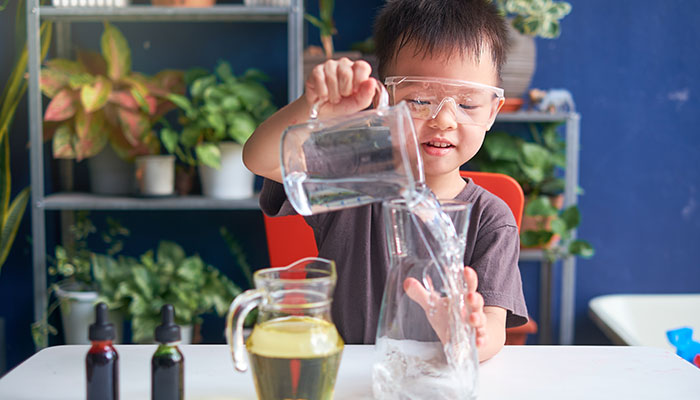While we believe that the books and resources recommended may be of value to you, keep in mind that these are suggestions only and you must do your own due diligence to determine whether the materials are appropriate and suitable for your use. PNC has no sponsorship or endorsement agreement with the authors or publishers of the materials listed.
COMMUNITY HELPERS

Let’s Be Scientists!
Children will learn about scientists as community helpers and conduct an experiment.

Lesson Objective
Children will learn about scientists and conduct an experiment using vinegar and baking soda.
Science
What You'll Need
- Vinegar – approximately ¼ cup per child
- Baking soda – approximately 2 Tablespoons per child
- Small plastic cups – 2 for each child
- Plastic spoons – 1 for each child
- Pipettes – 1 for each child
- Tall, clear, narrow container like a flower vase
- Chart paper and marker
What To Do
- Begin with a conversation about scientists. They are very curious people. They have many questions and do experiments to find answers to their questions.
- Show the children the baking soda and vinegar in their original containers. Have you ever seen these before? Where have you seen these items? What do they smell like? What do they feel like? (Refer to the questions in the Guiding Student Inquiry section.)
- Let’s make a list of our questions. We can do experiments to find the answers to some of our questions.
- How can we get a small amount of baking soda into our cups?
- Give each child a small cup, plastic spoon, and pipette.
- Allow the children to add one spoonful of baking soda to their cups, then add one squeeze of vinegar from the pipette.
- As the children observe the reaction, pay close attention to their responses. Use their responses to guide your support of their observations and learning. Use the questions provided in the Guiding Student Inquiry section.
Resources
Home School Resources
Home educators: use these printable lesson PDFs to teach this lesson to your home schoolers. They're available in English and Spanish.
Content Provided By
Common Core State Standards Initiative – These lessons are aligned with the Common Core State Standards ("CCSS"). The CCSS provide a consistent, clear understanding of the concepts and skills children are expected to learn and guide teachers to provide their students with opportunities to gain these important skills and foundational knowledge [1]. Visit the CCSS


